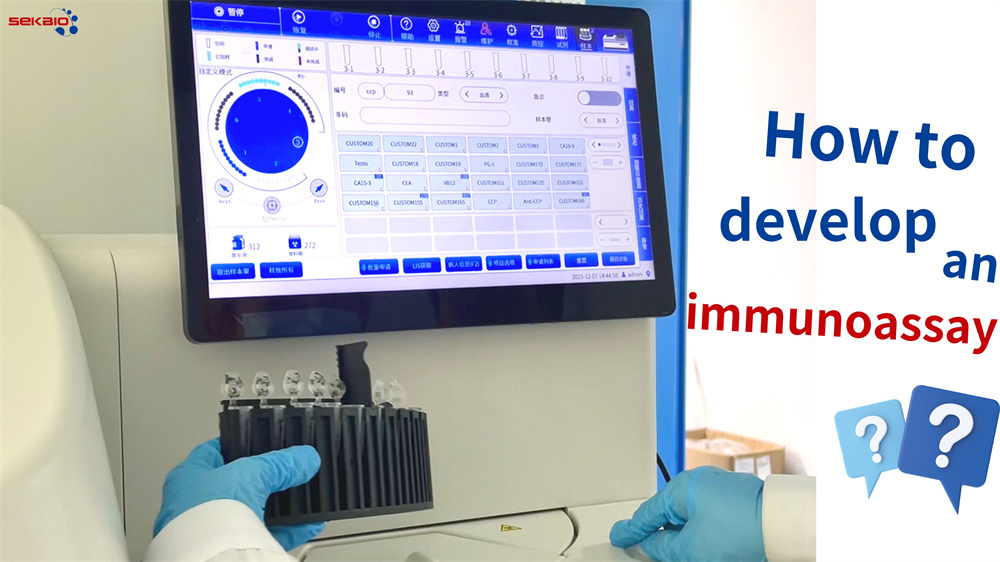How to develop an immunoassay

Developing an immunoassay involves several steps and requires expertise in various scientific disciplines. Since you work in the biomedical industry, you may already be familiar with some aspects of this process. Here's a general guide to developing an immunoassay:

Clearly define the purpose of the immunoassay (e.g., diagnostic testing, research, monitoring).
Identify the target analyte (the substance you want to detect or quantify, such as a specific protein or biomarker).

Choose appropriate antibodies or antigens for your immunoassay. These are crucial components that specifically bind to the target analyte.
Validate the specificity and sensitivity of the selected antibodies or antigens.

Optimize the assay conditions, including buffer systems, pH, temperature, and incubation times.
Determine the optimal concentration of antibodies or antigens for maximum sensitivity.

Conjugate labels or enzymes to the antibodies or antigens for signal detection.
Common labels include enzymes, fluorophores, or radioisotopes.

Create standard curves using known concentrations of the target analyte to establish a quantitative relationship.
Use these curves to interpret the results obtained during the assay.

Choose an appropriate detection method based on the type of label or enzyme used.
Common methods include enzyme-linked immunosorbent assay (ELISA), radioimmunoassay (RIA), and chemiluminescence assays.

Implement quality control measures to ensure the reliability and reproducibility of the assay.
Validate the assay by testing known samples and comparing results to established methods.

Consider automation for high-throughput applications.
Scale up the assay if necessary for large-scale production.

Document the entire development process, including protocols, results, and any troubleshooting steps.
Ensure compliance with regulatory standards and guidelines applicable to your industry.

Optimize the assay for the type of samples you'll encounter in real-world applications (e.g., blood, urine, tissue).
Remember that immunoassay development is a dynamic process that may involve iterations and adjustments. Collaboration with experts in immunology, biochemistry, and assay development can be valuable for success.
Related Immunoassays
- Cardiac Markers
-
Tumor Marker
-
PGII
-
G17
- CA50
-
CA125
- CA242
-
CA15-3
- CA19-9
- CA72-4
-
Pepsinogens I (PGI)
-
Human Epididymis 4 (HE4)
- Prostate-Specific Antigen (PSA)
- Squamous Cell Carcinoma (SCC)
- Neuron-Specific Enolase (NSE)
- Cytokeratin 19 Fragment (CYFRA21-1)
- Human Progastrin-releasing Peptide (ProGRP Tumor Marker)
- Protein Induced by Vitamin K Absence or Antagonist-II (PIVKA II Tumor Marker)
- Alpha-fetoprotein(AFP)
-
CEA
-
Human Chitinase 3-like 1
-
PGII
- Inflammatory Marker
- Infectious Disease
- Hormones
- Thyroid Function
- Glucose Metabolism
- Bone Marker
- Others
-
Heterophilic Blocking Reagent
- Animal Diagnostics

















